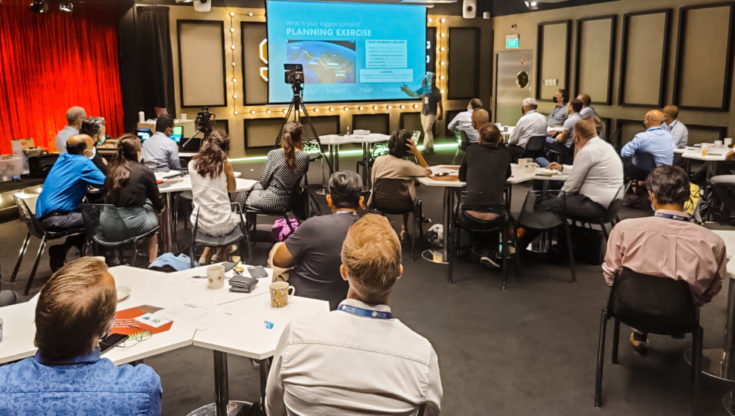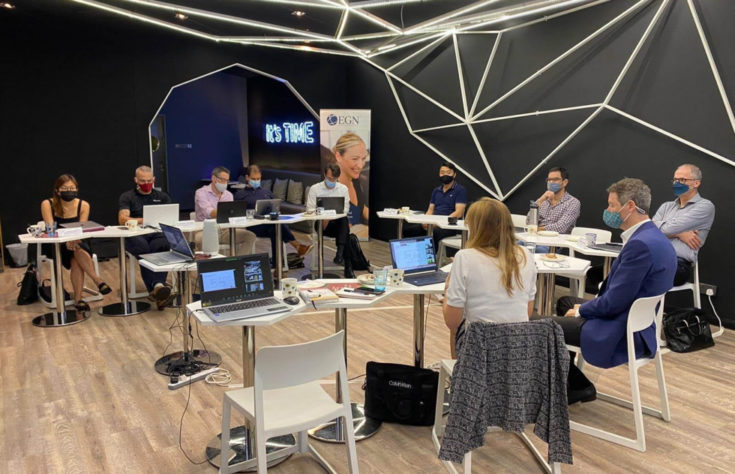Farzana Shubarna, now a director at a fast-moving-consumer-goods company, recalls the humiliating experience of being presented to her regional teams by one male mentor. “In the first country, he introduced me saying, ‘this is the regional director for operations and supply chain. She is here for diversity’.” Farzana says she smiled at her colleague’s uncomfortable introduction and brushed it off. The second time she cringed as he introduced her as the token woman on the team. His third attempt to undermine her was thwarted as she reeled off her work and academic history to her new colleagues. “This is the right message to our team,” she told him.

Ms. Shubarna admits that it takes experience and confidence to push-back on flippant discriminatory remarks. Even then, it is not the responsibility of an individual to fight systemic prejudice. Women are often blamed for gaping gender inequality because they shy-away from reporting misconduct or don’t push as hard as men for promotions or pay rises – a message underpinned by countless self-help books, seminars and confidence coaching specifically targeting female employees.
Eight years ago, Sheryl Sandberg, billionaire and chief operating officer of Facebook released Lean In, a book igniting a debate about women in leadership and gender equality. But asking women to apply a DIY approach to overcome gender discrimination and then to ‘lean in’ to drive their own advancement, overlooks systemic workplace issues.
Critically, the responsibility lies with business leaders to implement policies that will change organisational systems and practices so that women are rewarded equally. “You lead by example,” says Isabelle Alvarez, president of the Belgium Luxembourg Chamber of Commerce in Singapore and a member of EGN Singapore, an executive networking group that offers safe, gender neutral spaces to discuss issues with others in and outside your own industry. Peer networks that cater to professionals in senior positions is a good place to foster positive ideas about how to address gender disparity. “It is important to see people that are good leaders, to mingle with them, learn and discuss with them. It is about building resources, trust and relationships,” says Ms. Alvarez.
Women ask, but don’t “get”
Common wisdom would have us believe that women are holding back, unable to circumnavigate the structural barriers in the workplace that prevent promotions and higher pay. It is true to some extent. Gender stereotypes continue to stalk women from childhood into adulthood that arguably inhibit women’s ability to ask for more. Societal expectations and social perceptions that have been drilled into women by education institutions, social media, community and family influences are not so easy to shrug off in professional life, says Eileen Lau, Director, ING and an EGN Singapore member. “Like ‘don’t get hurt, don’t climb so high, don’t talk so loud, that’s not very ladylike,’ but boys are rewarded when they take risks and they are more aggressive, even physically,” says Ms. Lau, “that behavioural stimuli you internalise when you become an adult in the workspace.”
A marketing consultant, Oliver Meakings recently gave some advice on Twitter reinforcing the idea that women hold back: “Female freelancers please increase your day rates. Hiring 6 freelance positions last few days. Men are consistently asking for double their female counterparts – same experience, previous work, career milestones. You’re worth it.” He received 34,000 likes and his post was shared over 9,000 times. An empowering message, but if it was that easy, wouldn’t women be doing it already?
The fear of being penalised for being assertive can manifest as a reluctance to ask for more, resulting in pay and promotion disparity. Women, who are as confident as their male counterparts, may be warier of self-promotion due to perceived social consequences which experts coin as the “backlash effect” . “If a male and a female colleague at the same level, in the same company were to go for a promotion on the same role, you will find that females tend to shy away from applying for the promotion or gunning for it or fighting for it, unless they are sure that they are at least 100 percent qualified. For men, they tend to go for it anyway, even though they don’t meet 100 percent of the criteria,” says Ms. Lau who took almost a year to build the courage and ‘evidence’ to back her request for a promotion.
A woman’s perceived reticence to take leadership roles as quickly as men is only part of the problem. There is lots of evidence to suggest that women are asking for raises and promotions – they just don’t “get”. One study, ‘Do Women Ask?’ found that women ask for a raise just as often as men, but men are more likely to be successful. Women who asked obtained a raise 15% of the time, while men obtained a pay increase 20% of the time, the study found. This points to a deeper rooted problem that goes beyond women not having the confidence to ask.

Deliberate inclusivity
Huge strides have been made and the hiring, promotion and retention rates of women are improving as gender diversity is tackled more seriously in the workplace. “You can see pretty major shifts and changes in recent years, one of which is gender diversity targets,” says Ms. Lau. But there is room for improvement when translating policy on paper into actions. Achieving parity may require a deliberate effort in hiring, advancement and retention efforts, says Ms. Alvarez.
Reporting and tracking gender parity progress would also increase the accountability that is currently missing in some companies, according to Mercer’s Let’s Get Real About Equality report. While a majority of the companies they surveyed say that there is a commitment to improving diversity and inclusion, only 64% track gender representation with less than half that have a documented, multiyear strategy. “There is minimal data-based evidence, strategic planning or dedicated staff,” according to the report.
“Gender pay gap is but the symptom of many root causes, including biases in workplaces and in society,” says Dr Patrick Liew, Executive Chairman, GEX Ventures and EGN Singapore member. Addressing gender disparity has to happen well before the boardroom, Mr Liew argues, from encouraging men and women to share responsibilities at home to actively encouraging young women to enter into traditionally male-dominated sectors. Education has a huge part to play in closing the gender gap. “It has to be holistic. People writing about it, people teaching about it…universities preparing young women to learn how to be confident in boardrooms, or in negotiation…just doing it at a company organization level, you’re missing a whole decade of development of a woman’s psyche,” says Ms. Shubarna.
An emphasis on the importance of building and participating in a strong support network of peers and mentors needs to be drilled in from adolescence. Professional networks lead to more job and business opportunities, but EGN’s members also believe networks can be a cradle of support in harder times. “In a network of peers, you tend to be more open when talking about your challenges, personal failings and vulnerabilities without feeling you will lose credibility in your leadership,” says Ms. Lau. An external network of peers will also afford an escape from the company echo-chamber allowing a greater capacity to innovate. What you learn from peer networks cannot be found in textbooks, says Ms. Alvarez.

EGN Singapore has just launched its Women’s Executive Leadership peer group – a safe space to encourage more women to anchor in their leadership purpose.
Find out more here: https://www.egnsingapore.com/launch-of-womens-executive-leadership/
Contact information: Nick Jonsson
Co-founder and managing director, EGN Singapore
[email protected], +65 8618 3872
www.egnsingapore.com
LinkedIn: https://www.linkedin.com/in/nick-jonsson/
Nick Jonsson is a #1 international best selling author on Amazon for his newly-launched book, ‘Executive Loneliness’


One Comment on “Fix the system, not the women in it”